Boeing and the Royal Australian Air Force (RAAF) have completed demonstrations validating the operational effectiveness of the MQ-28 Ghost Bat Collaborative Combat Aircraft, according to the company.
The demonstrations, which concluded in June, were finished four months ahead of schedule. Boeing stated that the trials involved a series of RAAF-defined missions designed to show how the uncrewed platform could supplement and enhance crewed aircraft capabilities.
The company reported that the MQ-28 completed 150 flight hours and more than 20,000 hours of digital testing during Capability Demonstration 2025. The missions validated autonomous behaviours, multi-aircraft operations, deployment to RAAF Base Tindal, teaming with an E-7A Wedgetail airborne early warning and control aircraft, and the transmission of fused data between multiple MQ-28s and a crewed platform.
Glen Ferguson, MQ-28 Global program director, was quoted in the press release as saying: “The RAAF set the task of proving the first four steps in the Air Combat chain for the MQ-28 and we have accomplished that sooner than anticipated.”
He added: “Completing this work early allows us to accelerate the next phases of development – engage and assess – with an air-to-air weapon shot planned for later this year or in early 2026. The demonstrations have proven the maturity of MQ-28’s capabilities and the utility of CCA’s and their application to the future force mix.”
According to Boeing, the validated capabilities will be incorporated into the Block 2 aircraft currently in production. These are expected to form the basis of an initial operational capability for the RAAF and allied partners.





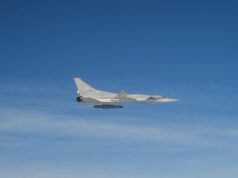
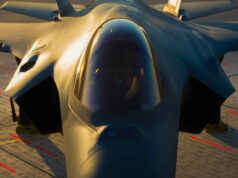

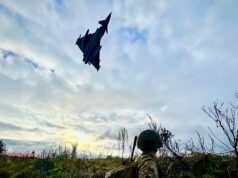
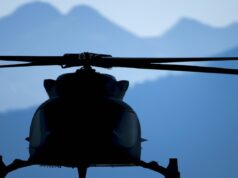
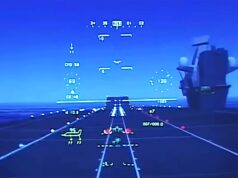
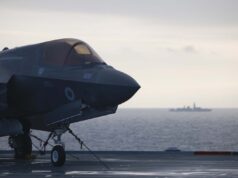
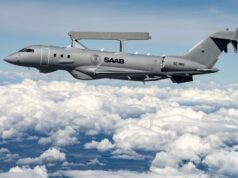

Slightly off topic: I read that the Aussie Defence Minister (and deputy PM) has played magic money this week, invoking NATO spending rules to claim Australia are spending 2.8% of GDP on Defence instead of the 2.1% of GDP they were spending last week. Of all the NATO standards they could adopt, this is the worst. When Cameron and Osborne introduced this in the UK more than a decade ago, it heralded a massive decline in military spending from which we never recovered.
You can’t buy Ghost Bats with magic money.
No but you may be able to impress the great orange one. It’s a preemptive recalculation with the Australian PM scheduled to visit Maralago Washington in the next few weeks.
When playing with Trump I don’t blame anyone for double dealing in return if they can get away with. Using it to actually fool their own people however is a different matter.
I don’t think it’s an attempt to fool the Australian public. The Australian Defence budget keeps on growing in real terms year on year, regardless of the method used for calculation.
This week alone there has been an announcement of $1.7 billion for Ghost Shark production and $12 billion for Henderson shipyard facilities in Western Australia.
The US continues to push for a defence increase to an arbitrary number as a percentage of GDP. The government has consistently resisted saying the increase will come through targeted specific programs (the examples above being the latest).
I think that is a better approach as it helps prevent money being pissed up against a wall and a scramble to spend just to meet a target.
Although the timing of both is clearly aimed to provide talking points in Washington.
Jon, I suspect the coming increase in AUS defence spend will be a largely attributed to the AUKUS sub project and the Mogami frigates. There was some speculative talk re a follow on F35 order to accommodate a 4th sqn, but that has evaporated .
AUKUS is a factor but most of that spending will be downstream in decades to come. There are new capabilities being funded and coming online already (HIMARS, Ghost Shark and Ghost Bat among them).
But there are others that have small amounts of initial funding now that are preparing for the future or will ramp up in the future. The $12 billion for Henderson WA shipyards and initial money for Konesberg and RTX/Raytheon factories are two examples. Once those facilities are up and running more funds will be committed to the things they are producing (new Landing Craft Heavy for army, Mogamis for Navy, JSM, NSM, GLMRS, PrSM and potentially SM2, SM3 or SM6 missiles).
The conservative media should stop banging on about cancelling the ‘fourth squadron’ of F35As.
It was only ever an option and meant to replace the Super Hornets but now the decision has been made to keep the Super Hornets and Growlers in service for decades more (they are versatile platforms and in demand).
Personally I think the RAAF will get more bang for buck from a couple of hundred Ghost Bat CCAs than a few more F35s.
Also squadron count comparisons with other air forces particularly the RAF can be misleading as the RAAF tends to follow the USAF fast jet model with 24 aircraft per squadron rather than 12 or 18. If the RAAF used a 12 aircraft model it would have 6 F35A squadrons and 2 Super Hornets frontline squadrons.
cheers for that OZ .The F35 sqn force levels you reference makes good sense. Liking your suggestion re Ghost Bat, It will be interesting to see the programme develop.
It is comparing to things like this that make me scoff at all the varied model aeroplanes that HMG tout as being so world leading game changers for HM Armed Forces.
Recalls photos of Healey posing next to Stormshroud.
RAF UAV/CCA efforts seem to less focused and spread over multiple programs or platforms. The RAAF at least has the benefit of a singular focus which helps account for the rapid development program.
Interestingly this appears to be the first official confirmation that the early Block 1 and current Block 2 Ghost Bats may be weaponised with air to air missiles. It has always been implied but the obvious lack of any weapons bays for internal carriage on an ostensibly ‘stealthy’ platform has created uncertainty.
While a lack of any renders or images with wing mounted pylons has left things deliberately vague, pylon carriage seems the only option though it would compromise whatever level of stealth the Ghost Bat may have and possibly compromise any F35s its wingman for.
So no indication of likely load out but unlikely to be more than two AMRAAMS or a couple of Stormbreaker small diameter glide bombs in the air to ground role (RAAF has 3,900 in inventory).
I assumed GhostBat was intended to be weaponised, or at least a fair proportion of them. So what is being touted as a World leading loyal wingman or flexible fairly high end drone, in reality can do actually what in stealth mode? What sensors can it carry and is there any real modularity in changing payloads? If this were a uk product I can just already see the negativity on here IF at least these questions raised are valid.
Good question. The modular sensor payloads are carried in the nose cone which is designed to be self contained and (relatively) easily and quickly swapped. This is an innovative design and is a relatively large volume big enough to house a radar or other sensors. There is a variant already seen publicly and test flown with a glass IRST blister (very similar to the faceted glass on the F35 nose).
While it is most likely designed to carry an AESA radar possible sensor payloads include synthetic aperture ground tracking radar, IRST or radar jammers. The point being to tailor the sensor payloads to the mission. On any given mission a swarm of networked Ghost Bats might each have different sensors and share data between them (and with manned platforms).
So while in the air to air role it would need targeting data, a missile carrying Ghost Bat wouldn’t necessarily need its own radar if targets were handed off from Wedgtails MESA radar or the AESA radars of Super Hornets or F35s.
In terms of weapons payloads a close inspection of the underside of the aircraft shows hatches (with serrated stealth shaped edges) for the undercarriage and some other small hatches too small to be a weapons bay.
Again while the current design has a large internal volume that could accommodate weapons (but mostly used for fuel to give its suggested 3,000 km range) it doesn’t appear to be able to carry them internally without a major redesign.
The RAAF and Boeing have hinted publicly a new designs already somewhat down the development path and many assumed that the current design would act firstly as flying prototypes to validate the AI and flight systems and go into service as primarily as long range sensor nodes with future variants having internal weapons carriage.
Given how rapidly the Boeing Australia team has brought the Ghost Bat from design to operational status (IOC next year?) it’s not beyond the realms of possibility that a new design may have internal weapons.
For now it appears the Block 2 will be used for weapons testing, which as far as I can see would require pylon mounted missiles.